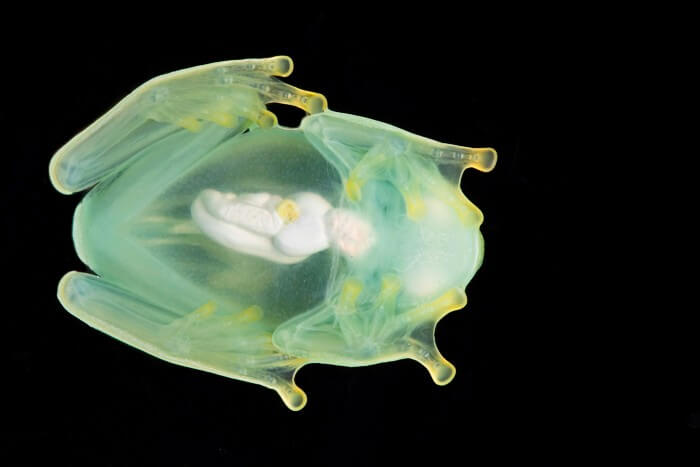Glassfrogs are known for their ability to achieve transparency through their reflective livers, which allow them to store nearly all of their red blood cells and perform their characteristic “disappearing act.” A recent study published in the journal Science, conducted by scientists at the American Museum of Natural History and Duke University, has shed new light on this unique adaptation and its potential implications for biomedical research.
Glassfrogs are nocturnal amphibians that live in the American tropics. They are characterized by their transparent undersides and muscles, which allow their bones and organs to be visible through their skin. This transparency serves as a form of camouflage, helping the frogs to blend in with their surroundings when they sleep upside down on translucent leaves during the day.
Transparency is a relatively rare adaptation among land animals, as it is difficult for vertebrates to achieve due to the presence of red blood cells in their circulatory system, which absorb light and disrupt transparency. However, glassfrogs have developed an alternative strategy that allows them to overcome this challenge.
According to the findings of the recent study, glassfrogs are able to increase their transparency by two to threefold by storing nearly 90% of their red blood cells within their livers, which contain reflective guanine crystals. This process allows them to “hide” the red blood cells from view, and the frogs are able to do this without experiencing blood clots or other complications, despite the fact that aggregating red blood cells in this way can often lead to dangerous blood clots in veins and arteries in most vertebrates.
To study this process, the researchers used a technique called photoacoustic imaging, which uses light to induce sound waves from red blood cells. This allowed them to map the location of the cells within the frogs without the need for any kind of restraint, contrast agents, or surgical manipulation. It was particularly important to use this technique, as the glassfrogs’ transparency is disrupted by activity, stress, anesthesia, and death.
The researchers focused on one particular species of glassfrog, the Hyalinobatrachium fleischmanni, and found that these frogs are able to “pause” their respiratory system during the day, even at high temperatures, in order to store their red blood cells in their livers. When they need to become active again, they bring the red blood cells back into circulation, which allows them to move around and break their transparency.
The co-lead author of the study, Jesse Delia, said that this research “will hopefully stimulate biomedical work to translate these frogs’ extreme physiology into novel targets for human health and medicine.” The unique ability of glassfrogs to store and retrieve their red blood cells without experiencing blood clots raises significant questions for researchers in the fields of biology and medicine, and there is potential for this research to lead to new avenues of study related to blood clots and other medical conditions.
Other authors on the study include Maomao Chen, Chenshuo Ma, Xiaorui Peng, Xiaoyi Zhu, Tri Vu, Junjie Yao, and Sönke Johnsen from Duke University; Laiming Jiang and Qifa Zhou from the University of Southern California, Los Angeles; and Lauren O’Connell from Stanford University. The study was supported in part by the National Geographic Society, the Human Frontier Science Program postdoctoral fellowship, and the National Science Foundation.

